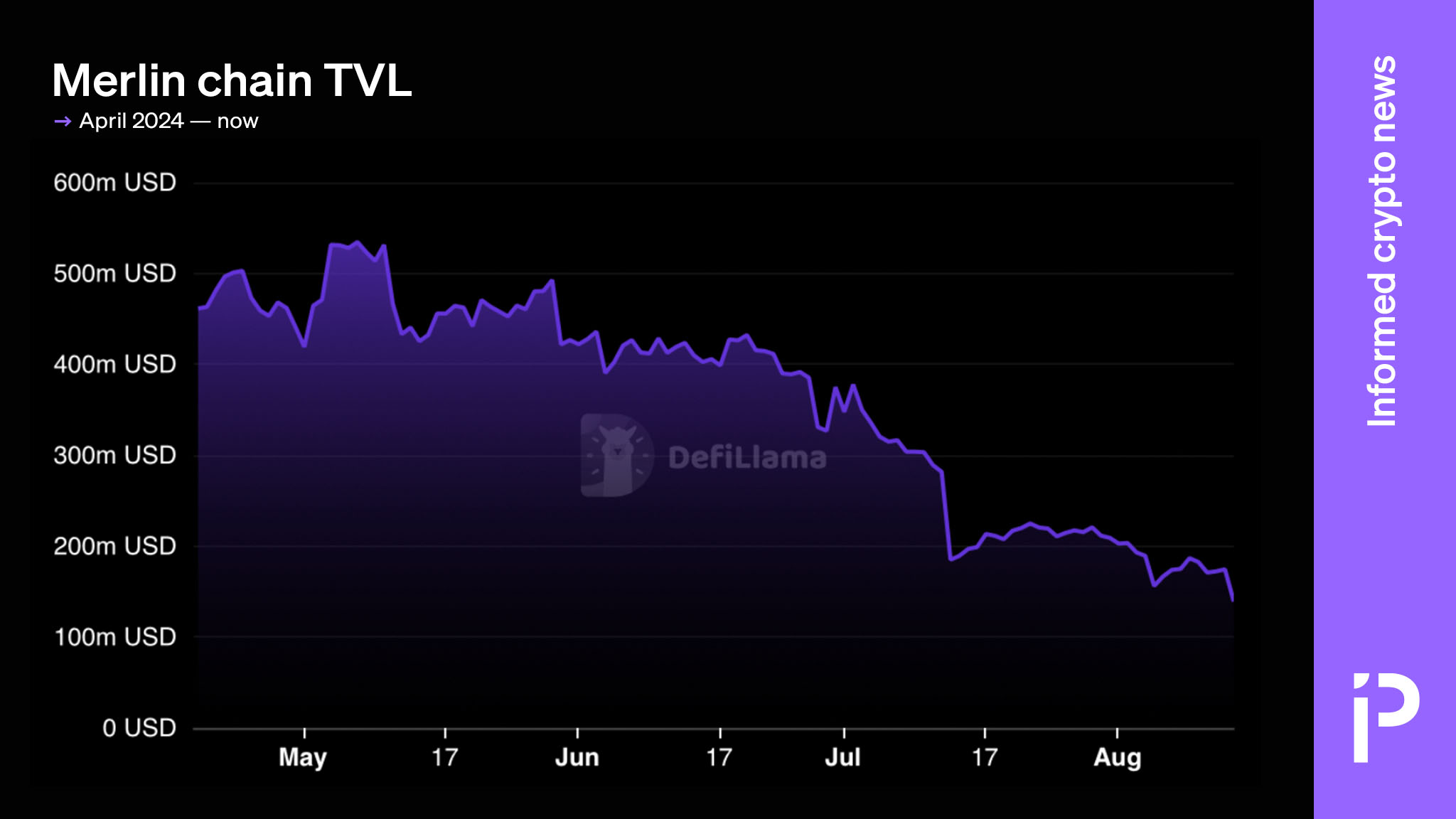Although the marketing gimmick worked for a while, investors are starting to realize that so-called layer 2 scaling solutions are, in effect, just new blockchains.
Merlin’s blockchain, which once billed itself as the largest ‘Bitcoin layer 2,’ has lost 63% of its assets since July 1 according to DefiLlama data — far more volatile than Bitcoin’s actual blockchain, which has lost just 5%.
Worse, MerlinSwap, the most popular exchange for assets on this chain, lost a devastating 88% of its total value locked (TVL) over the same period.
Merlin has at least two proprietary tokens, MERL and MP. Unfortunately, many investors have lost confidence in those assets, as well. MERL is down 84% from its all-time high, and MP has shed 90%.
Merlin has morphed and changed the names of its ecosystem constituents since it launched its Mainnet in February 2024. It now claims that the TVL of Merlin Seal — a nebulously defined figure that includes double-counted, leveraged, or price-interconnected assets without meaningfully independent value — is worth $2.1 billion.
Regardless, that’s still 44% lower than its claimed $3.8 billion Merlin Chain value as of June 6.

Read more: Lightning Network hacker Burak introduces new Bitcoin layer 2, Brollups
Merlin’s centralized, Bitcoin-branded chain declines
Layer 2s are separate chains of data blocks that rely on a main blockchain for final settlement and security. Boasting speed, throughput, thrift, and various other features like expressivity and connectivity, these layer 2s sacrifice decentralization and security to achieve these feats.
In Merlin’s case, it doesn’t even use Bitcoin’s proof-of-work security model. Instead, it opts for a wealth-based control system, proof-of-stake. Ceremonially, Merlin uses bitcoin to prove that sequencers and validators have staked sufficient wealth, and it intermittently publishes rolled-up data onto Bitcoin’s blockchain.
While Merlin’s recent performance has been disappointing, the so-called decentralized finance (DeFi) sector of crypto remains dynamic. Sector-wide, TVL across DeFi protocols is up 54% year to date, and the combined market capitalization of DeFi tokens has quadrupled.
With a few hundred million or billion left after a terrible 2024 — depending on how it values its assets — Merlin still has the liquidity to stage a comeback. There’s potential for recovery if its insiders can pivot to a different marketing strategy besides a ‘layer 2’ trope that is aging quickly.







Leave a Reply